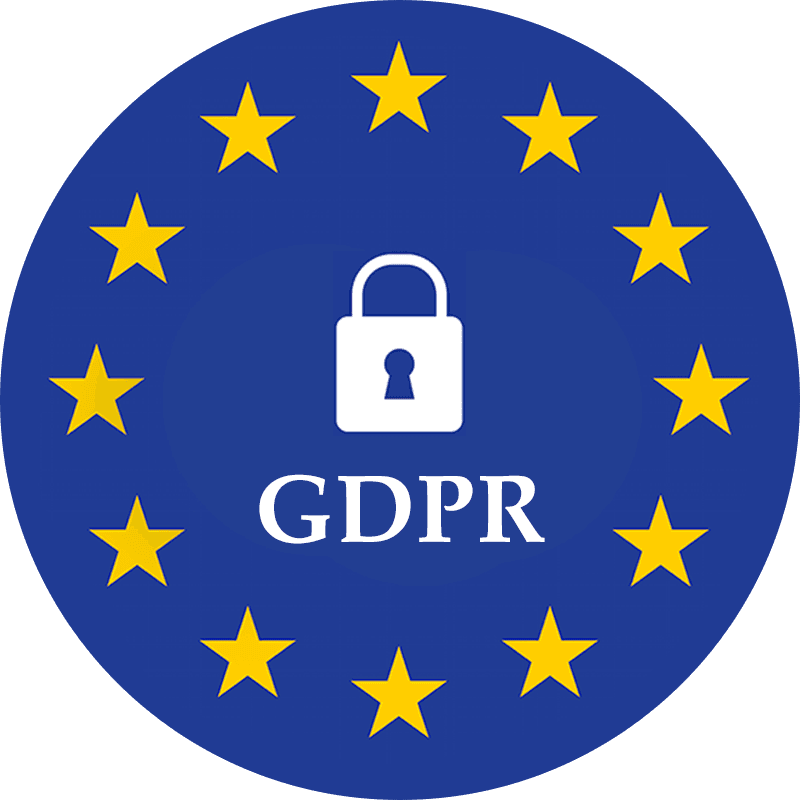All Blogs
4 Jun 2025
How Embedded Protection Impacts Customer Satisfaction
E-commerce in India has matured. Customers are shopping across categories, paying digitally, and getting orders delivered to remote towns in days.
E-commerce in India has matured. Customers are shopping across categories, paying digitally, and getting orders delivered to remote towns in days.
E-commerce in India has matured. Customers are shopping across categories, paying digitally, and getting orders delivered to remote towns in days.
Insurance
5 min read
5 min read
5 min read


How Embedded Protection Impacts Customer Satisfaction
Customer experience today is about more than just ease of use. As expectations evolve, users aren’t only asking how well your product works—but how consistently it delivers, and how prepared it is for when things don’t.
For founders, operators, product leads, and commercial teams, that means satisfaction can’t just be about the ideal scenario. It also depends on what happens when plans change, when things go wrong, or when outcomes don’t match intent.
Embedded protection is one way businesses are building for those moments—proactively, quietly, and in a way that reinforces trust without adding friction.
This blog explores how embedded protection influences customer satisfaction—and why it’s becoming a natural part of experience design for platforms that prioritise loyalty and long-term growth.
1. Satisfaction Goes Beyond the Purchase
Smooth onboarding and clean checkouts are important—but they’re not the whole story.
Customer satisfaction is increasingly shaped by the end-to-end experience, not just the first few steps.
This includes what happens after a purchase:
Can the customer easily get help?
Is there clarity when something doesn’t go to plan?
Does the platform step in—or step away?
Embedded protection doesn’t replace a great core product. It adds another layer of confidence—especially at the points where customers feel most exposed.
That’s what builds resilience into the customer experience—not as insurance, but as a system of support.
2. Protection Without Friction
Traditional protection models live outside the user journey—redirects, forms, third-party flows.
Embedded protection changes that. It removes friction entirely:
It’s offered at the right time, with no extra steps
It uses data the platform already has
It simplifies the decision instead of complicating it
No need to re-explain anything
The customer sees relevant protection where they already are and accepts it in a click.
This isn’t about upselling coverage. It’s about reducing mental load.
And for many customers, that’s what makes protection feel less like a feature and more like part of the product.
3. Claims Matter More Than You Think
You can design a strong flow and deliver on core functionality—but the moment something breaks is where your brand gets tested.
The claims experience isn’t a separate journey. It’s part of the product.
And when it feels slow, opaque, or disconnected, it creates frustration that’s hard to recover from.
With embedded protection, the experience can be:
Pre-filled and triggered using existing context
Managed within the platform, not handed off
Faster, clearer, and less effortful for the user
Customers don’t expect perfection. But they do expect responsiveness.
Claims are where that expectation either holds up—or doesn’t.
4. Confidence Becomes the Differentiator
Businesses can keep improving interfaces, flows, and performance—but eventually, those improvements return diminishing results.
Protection offers a different lever: confidence.
Confidence that if something changes, fails, or breaks, the user won’t be left on their own.
That shift builds trust—and customers remember it.
You’re no longer just a service provider. You become the platform that stays involved beyond the transaction. That distinction matters, especially when customers are deciding whether to use you again or recommend you to someone else.
5. Invisible by Design, Impactful When Needed
The best protection experiences don’t interrupt. They support quietly in the background.
That means:
The offer is contextual, not pushed
There are no extra forms, portals, or follow-ups
The resolution is handled where the issue occurred
It doesn’t feel like an extra feature. It feels like the product already thought this through.
And that’s what makes it work.
Customers don’t need to understand how it works. They just need to feel like it’s there when it matters.
6. Protection That Moves Metrics
Protection doesn’t only affect experience. It affects growth, operations, and support—because it changes how users behave when things go right and when they don’t.
What teams often see after embedding protection:
Higher repeat usage from users who feel safer transacting
Increased premium plan adoption when protection is bundled
Lower support load, especially for complaints, refunds, or exceptions
Improved CSAT and NPS, particularly among users who filed claims
Fewer escalations, because users trust the platform’s resolution process
For founders, that means stronger retention.
For business leaders, it means better unit economics.
For customers, it means a better end to end experience
Conclusion
Embedded protection isn’t about removing all risk. It’s about helping your product respond better when risk becomes real.
That’s what moves satisfaction from something reactive to something designed.
At Assurekit, we work with teams that treat protection as a natural part of their experience—not as a feature on a roadmap, but as infrastructure that supports growth and customer trust.
If you’re exploring what that could look like in your world, we’re around.
How Embedded Protection Impacts Customer Satisfaction
Customer experience today is about more than just ease of use. As expectations evolve, users aren’t only asking how well your product works—but how consistently it delivers, and how prepared it is for when things don’t.
For founders, operators, product leads, and commercial teams, that means satisfaction can’t just be about the ideal scenario. It also depends on what happens when plans change, when things go wrong, or when outcomes don’t match intent.
Embedded protection is one way businesses are building for those moments—proactively, quietly, and in a way that reinforces trust without adding friction.
This blog explores how embedded protection influences customer satisfaction—and why it’s becoming a natural part of experience design for platforms that prioritise loyalty and long-term growth.
1. Satisfaction Goes Beyond the Purchase
Smooth onboarding and clean checkouts are important—but they’re not the whole story.
Customer satisfaction is increasingly shaped by the end-to-end experience, not just the first few steps.
This includes what happens after a purchase:
Can the customer easily get help?
Is there clarity when something doesn’t go to plan?
Does the platform step in—or step away?
Embedded protection doesn’t replace a great core product. It adds another layer of confidence—especially at the points where customers feel most exposed.
That’s what builds resilience into the customer experience—not as insurance, but as a system of support.
2. Protection Without Friction
Traditional protection models live outside the user journey—redirects, forms, third-party flows.
Embedded protection changes that. It removes friction entirely:
It’s offered at the right time, with no extra steps
It uses data the platform already has
It simplifies the decision instead of complicating it
No need to re-explain anything
The customer sees relevant protection where they already are and accepts it in a click.
This isn’t about upselling coverage. It’s about reducing mental load.
And for many customers, that’s what makes protection feel less like a feature and more like part of the product.
3. Claims Matter More Than You Think
You can design a strong flow and deliver on core functionality—but the moment something breaks is where your brand gets tested.
The claims experience isn’t a separate journey. It’s part of the product.
And when it feels slow, opaque, or disconnected, it creates frustration that’s hard to recover from.
With embedded protection, the experience can be:
Pre-filled and triggered using existing context
Managed within the platform, not handed off
Faster, clearer, and less effortful for the user
Customers don’t expect perfection. But they do expect responsiveness.
Claims are where that expectation either holds up—or doesn’t.
4. Confidence Becomes the Differentiator
Businesses can keep improving interfaces, flows, and performance—but eventually, those improvements return diminishing results.
Protection offers a different lever: confidence.
Confidence that if something changes, fails, or breaks, the user won’t be left on their own.
That shift builds trust—and customers remember it.
You’re no longer just a service provider. You become the platform that stays involved beyond the transaction. That distinction matters, especially when customers are deciding whether to use you again or recommend you to someone else.
5. Invisible by Design, Impactful When Needed
The best protection experiences don’t interrupt. They support quietly in the background.
That means:
The offer is contextual, not pushed
There are no extra forms, portals, or follow-ups
The resolution is handled where the issue occurred
It doesn’t feel like an extra feature. It feels like the product already thought this through.
And that’s what makes it work.
Customers don’t need to understand how it works. They just need to feel like it’s there when it matters.
6. Protection That Moves Metrics
Protection doesn’t only affect experience. It affects growth, operations, and support—because it changes how users behave when things go right and when they don’t.
What teams often see after embedding protection:
Higher repeat usage from users who feel safer transacting
Increased premium plan adoption when protection is bundled
Lower support load, especially for complaints, refunds, or exceptions
Improved CSAT and NPS, particularly among users who filed claims
Fewer escalations, because users trust the platform’s resolution process
For founders, that means stronger retention.
For business leaders, it means better unit economics.
For customers, it means a better end to end experience
Conclusion
Embedded protection isn’t about removing all risk. It’s about helping your product respond better when risk becomes real.
That’s what moves satisfaction from something reactive to something designed.
At Assurekit, we work with teams that treat protection as a natural part of their experience—not as a feature on a roadmap, but as infrastructure that supports growth and customer trust.
If you’re exploring what that could look like in your world, we’re around.

Ready to level up?

Ready to level up?

Ready to level up?

Assurekit is a full-stack digital insurance platform built for growth, that enables anyone to create, sell and manage contextual insurance products in a plug-and-play manner



©2024 Assurekit technology & service pvt ltd

Assurekit is a full-stack digital insurance platform built for growth, that enables anyone to create, sell and manage contextual insurance products in a plug-and-play manner



©2024 Assurekit technology & service pvt ltd

Assurekit is a full-stack digital insurance platform built for growth, that enables anyone to create, sell and manage contextual insurance products in a plug-and-play manner



©2024 Assurekit technology & service pvt ltd